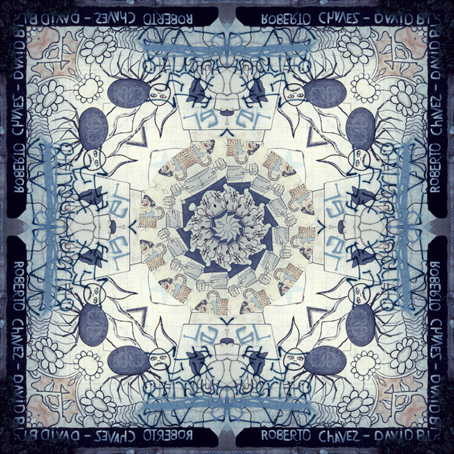
Digital Study for Raza Mural Remix Installation (2010)
Sandra de la Loza
In 1972 Roberto Chavez painted an antiwar mural in East Los Angeles. Porque Se Pelean? (Why Do They Fight?) depicts war through cartoonish weaponry, surreal figures and animals, and skulls alongside anthropomorphic flowers. Beneath the imagery he signs his name as well as those of the local youth who watched him paint (and who might otherwise have tagged his mural). As a college instructor in the 1970s, Chavez would mentor younger Chicano artists, including Joe Rodriguez, who later joined and then directed Mechicano. Nearly four decades later, archival artist Sandra de la Loza discovered a slide of this mural in the Nancy Tovar Collection at the UCLA Chicano Studies Research Center as part of her own research on Chicano muralism. The image stood at the intersection of the more canonical didactic work produced by Chicano art groups and the often overlooked decorative, landscape, and psychedelic murals painted by local residents. Using a kaleidoscopic program, she animated the image, turning it into an arabesque design, and an image machine, borrowing and mixing the older visual elements to create something new.
Digital rendering
Collection of the artist © Sandra de la Loza

Untitled Mural in East Los Angeles (1972)
Ernesto de la Loza
Mural
Nancy Tovar Collection, UCLA Chicano Studies Research Center Library Ernesto de la Loza
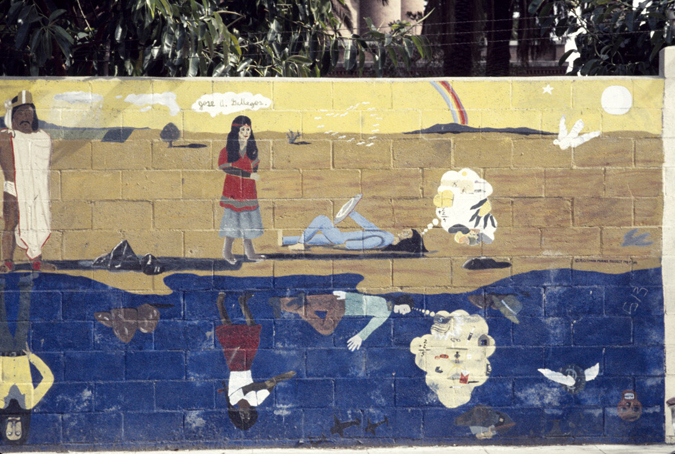
Untitled Mural in East Los Angeles (ca. 1975)
Believed to be Jose A. Gallegos
Mural
Nancy Tovar Collection, UCLA Chicano Studies Research Center Library Regents of the University of California
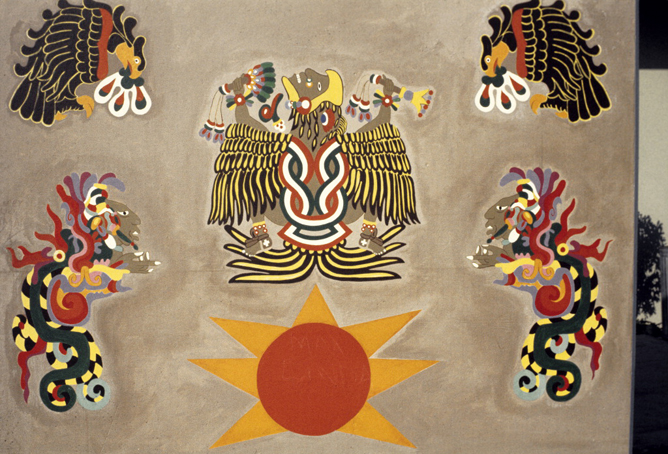
Mural title unknown (ca. 1970s)
Artist Unknown
Mural
Nancy Tovar Collection, UCLA Chicano Studies Research Center Library © Regents of the University of California
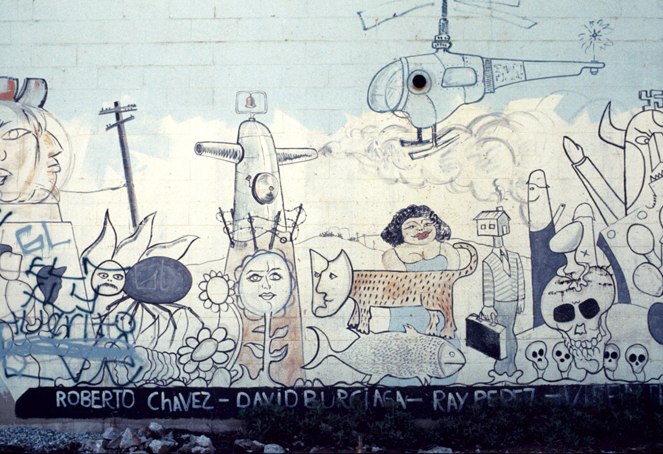
¿Porque se pelean? (1972)
Roberto Chavez
Roberto Chavez's mural, ¿Porque Se Pelean? (1972), was painted on the Simons Roofing building at Eastern Drive and Floral Avenue in East Los Angeles. Chavez, who is included in Art Across the Hyphen: The Mexican-American Generation exhibition at the Autry National Center, added names of local youth who watched him paint. Sandra de la Loza uses a detail from a photograph of this mural taken by Nancy Tovar as the basis for an animated exploration of mural aesthetics.
Mural
Nancy Tovar Collection, UCLA Chicano Studies Research Center Library Regents of the University of California (photograph), Roberto Chavez (mural)
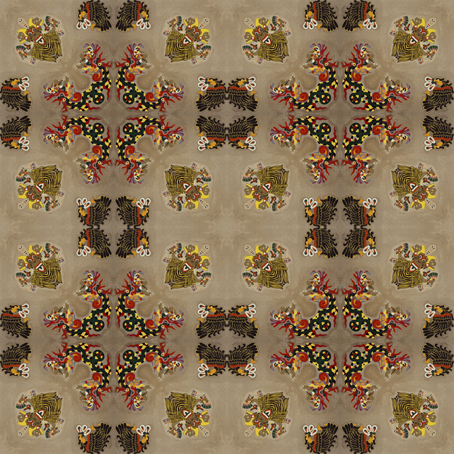
Mural Remix (2010)
Sandra de la Loza
Duratrans in lightbox 48 x 48 in
Collection of the artist © Sandra de la Loza
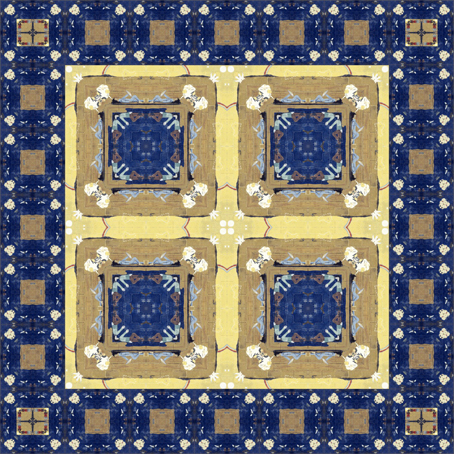
Artist unknown, Believed to be by Jose A. Gallegos, 1975, Funded by Citywide Murals (2010)
Sandra de la Loza
A panel by Jose A. Gallegos that was part of a long wall mural funded by the Citywide Mural Program displays indigenous themes, landscapes, and mythologies in a mind-bending context. A Chicana hippie wearing a headband, a huipil, and red lipstick stands over a long-haired man who lies on his back in a barren desert landscape. His blue action-figure suit and peace sign shield give him the appearance of a character from a sci-fi movie. He seems to be on a hallucinatory “trip,” as suggested by the depiction of a vision in the form of a thought bubble filled with free-floating images of organic matter, maize, a mathematical equation, the sun, and a “primitive” man dancing with a tool. Both central figures are mirrored in what seems to be a lake, transforming the “material” landscape into a parallel but alternate reality. In the counter image, a dove becomes a coin with wings. The equation 2 + 2 = 4 becomes 2 + 2 = 5. The sun is reflected as a skull and a stone turns into a frog with a felt hat. Murals became mediums for memory, time travel, self-understanding, and the metaphysical: spaces where artists renamed their subjects beyond the limits of “real” space and time.—Statement by Sandra de la Loza.
Duratrans in lightbox 48 x 48 in
Collection of the artist © Sandra de la Loza

Untitled by Ernesto de la Loza and Richard "Lil Man" Ruiz (ca. 1972 (After the Riots) and 2010)
Sandra de la Loza
Duratrans in lightbox 48 x 48 in
Collection of the artist © Sandra de la Loza


















